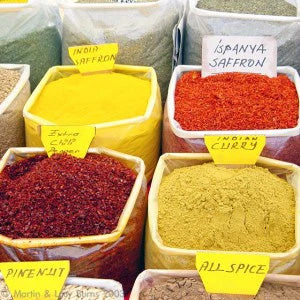The History of Textile Dyes
Posted by FARIBAULT MILL

A Bit of History

Long has it been since the industry of textile products left behind its humble beginnings in natural dyes, but such growth and expansion has only proven to strengthen this facet of the fabric world.
Historically, dyes came from nature, with primary sources consisting of animals or plants. The majority of these came from roots, berries, bark, leaves, wood, and other organic, naturally occurring substances such as fungi.
Archaeologists have even found evidence of textile dyeing going back to the Neolithic period, otherwise known as the New Stone Age, which began around 10,200 BC. In China, there is evidence that dyes were created from insects, barks, and plants, beginning about 5,000 years ago.

These dyes, while effective, were rudimentary and simplistic, often depicting ruddy colors (e.g., reds, browns, and oranges) that faded with use. The more luxurious dyestuffs (substances that produce a dye) which produced brilliant and permanent colors, such as the natural invertebrate dyes, didn’t gain major popularity until the medieval era.
Around that same period, plant-based dyes such as woad, indigo, saffron, and madder became important trade goods throughout Asia and Europe. Spanish treasure fleets then introduced cochineal and logwood to Europe, thus expanding the amount of available dye colors.
When Europe carried colonists to America, the dyes came with them. These natural dyes continued to dominate the global textile market, until William Perkin created mauveine (a rich synthetic purple) in 1856.
Then, in 1869, the red dye found in madder was the first natural pigment to be synthetically duplicated, which began the steady decline of dyes produced from natural sources.
The Process of Dyeing

Photo: Saco River Dyehouse
As with the dyestuffs themselves, the dyeing process was originally rudimentary. Essentially, you would soak the material containing the dye in water, then add the textile fabrics to the resulting solution and bring the water to a simmer, often for days or weeks. This would release the dyestuff from whatever organic material held the dye and attach it to the textile fabrics.
The problem was that much of the dyeing process was still experimental. Will this material produce a color? Will that color soak into this fabric? How long must it be simmered to achieve a result? How long will the result last?
And as one can guess, this created some strange concoctions, as Jill Goodwin writes in the book A Dyer’s Manual:
“We shall never know by what chances primitive man discovered that salt, vinegar from fermenting fruit, natural alum, and stale urine helped to fix and enhance the colours [sic] of his yarns, but for many centuries these four substances were used as mordants.”
(Mordants being “a substance, typically an inorganic oxide, that combines with a dye or stain and thereby fixes it in a material.”)
Although disgusting, the barbaric origins of dyeing has led to the current state of long-lasting and vibrant colors. From organic materials to synthetics, today’s fabric world can thank yesterday’s experiments for doing all of the strange and laborious work of dye exploration.
TAGS:

